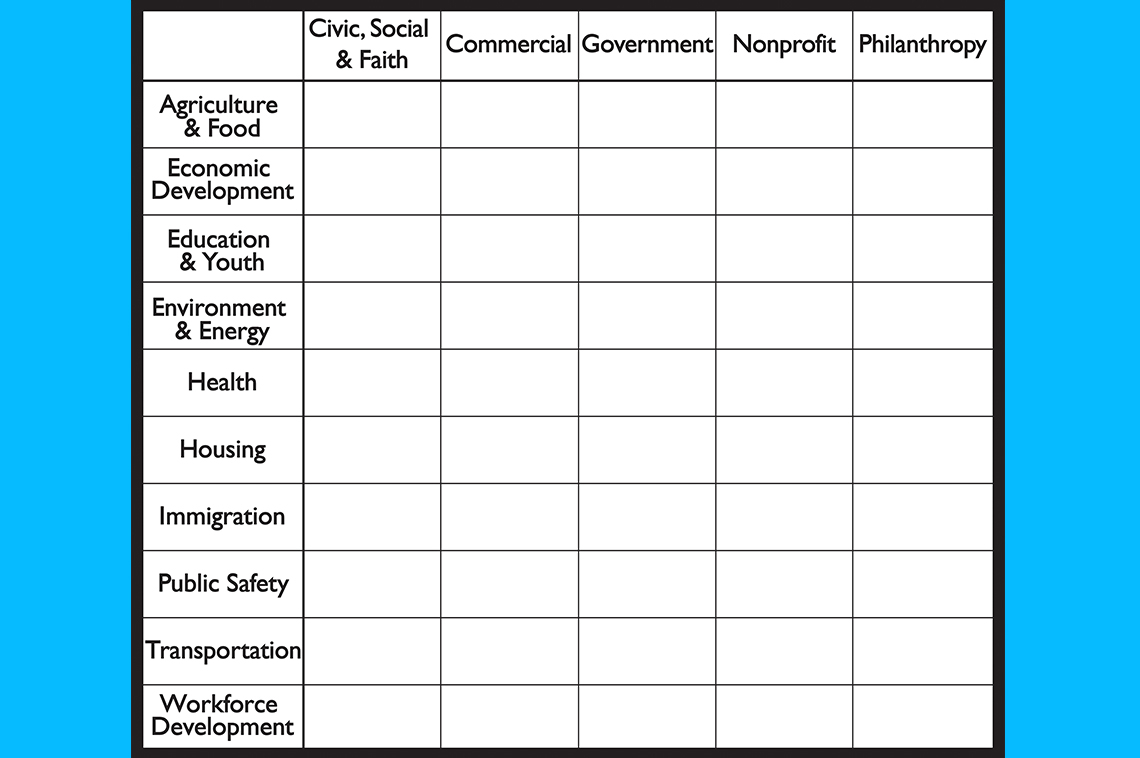
About a year ago we put the Community Development Matrix together to lay out our sense of how the community planning and development world self-organizes. It helps us break things down into more digestible morsels and monitor the diversity of perspectives we take into account across all four of our lines of work. After debuting the matrix at our Summit and sharing it with colleagues across the country, it’s time to share what we’ve affectionately named the Matrix 2.0. We’ve also cooked up a potential way to bring similar rigor to how we look at the arts world, but let’s save that for a separate post.
OK so it’s more like version 1.1 than 2.0, but there are a few changes worth highlighting for those of you who nerd out on this kind of stuff like we do.
Education & Youth
While subtle, swapping the order of terms in this sector heading points toward something significant. There’s a robust world of adult education that includes things like literacy, language instruction, and personal finance that we weren’t really paying much attention. This new format is our effort to better include non-youth education, while still incorporating all that the youth realm offers, from K-12 schools and learning technology to childcare and enrichment programs.
Environment & Energy
Those of you who follow our blog closely may recall the change from “Environment & Open Space” that we mentioned last week. The old heading helped to invoke parks and conservation, but environmental systems and energy sources/uses weren’t often part of the conversation. The new heading helps lay out a more specific target and avoids some of the complications of “open space”: which at times includes things like pedestrian plazas born out of transportation necessity rather than only intentional efforts to impact the natural environment.
Health
This is another subtle move, but one that I think many can appreciate. We talked for a good 45 minutes about revisions to “Health & Human Services” before landing on our new model of brevity. We wanted to get at the holistic components of wellbeing while still grounding squarely in a recognizable and ubiquitous sector, and in the end the simplest solution proved best.
Immigration
Many of you will recall that this sector was previously “Immigration & Social Justice.” For us, immigration refers to both new entrants to a country and new entrants to a community—and encompasses people and organizations focused on the complexity of otherness. We included social justice in the Matrix because it’s an important facet of community undertakings, but as Jamie B. recently said at PolicyLink’s Equity Summit, “Every decision is an equity decision.” Social Justice is a lens that applies to all community planning and development because every decision impacts access and opportunity for at least a subset of community members. We’ll dive into this more deeply later this week with an Unpacking the Matrix post, but know that our goal in shortening this sector to “Immigration” is to elevate social justice rather than omit it.
There are a few other things worth noting that didn’t fit into an existing sector or seem to merit adding a new row. Emergency services, broadband connectivity, and civic infrastructure (e.g. libraries) fall on that list. Are there other things you think we’ve missed? What do you think about the new changes? As always, we'd love to hear from you via the comments section below.





